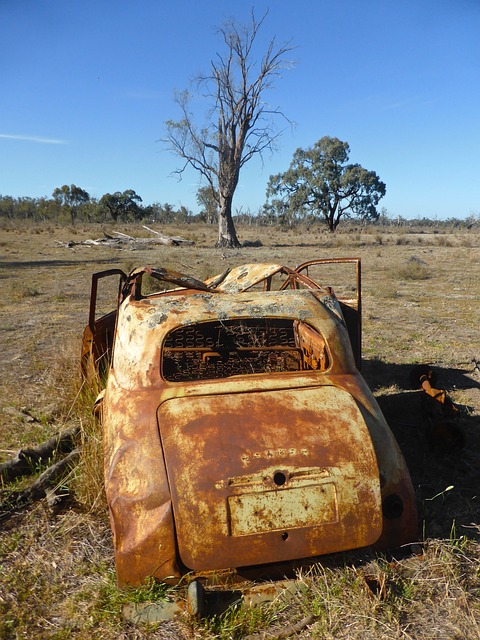Reduction involves the gain of electrons or a decrease in oxidation state, while oxidation involves the loss of electrons or an increase in oxidation state.
What is reduction?
Reduction is a chemical process where there is an addition of electrons to an atom, ion, or molecule. During this process, the oxidation state of that particular substance decreases. In other words, reduction involves the removal of oxygen from a substance or the addition of hydrogen to it.
This reaction often occurs alongside oxidation in what is known as redox reactions. The net result being that one compound loses electrons while another gains them.
Reducing agents are substances that have high affinity for electrons and will readily donate them to other atoms during a redox reaction. Some common reducing agents include hydrogen gas (H2), carbon monoxide (CO), and metals such as iron and zinc.
One example of reduction can be seen when metal ions gain electrons to form pure metals. For instance, when copper ions pick up two electrons each they become copper metal with zero charge.
Understanding reduction is important because it plays a critical role in many industrial processes such as refining ores and manufacturing chemicals like ammonia among others.
What is oxidation?

(Image by Siggy Nowak from Pixabay)
Oxidation is a chemical process that involves the loss of electrons or an increase in oxidation state. In other words, it’s when a molecule loses one or more electrons during a reaction. This can occur through the addition of oxygen to a compound or by removing hydrogen atoms.
During oxidation, there is an overall increase in energy due to the transfer of electrons from one atom to another. This process can be spontaneous or non-spontaneous depending on various factors such as temperature and concentration.
Oxidation plays an important role in many chemical reactions and biological processes. It helps break down complex molecules into simpler ones, such as breaking down food molecules for energy production within cells.
Some common examples of oxidation include rusting of iron (where iron reacts with oxygen in the presence of moisture), combustion (when fuel burns with oxygen producing heat and light), and metabolism (the breakdown and utilization of nutrients within living organisms).
Understanding what oxidation is can help us understand how different substances interact chemically with each other.
Reduction Vs. Oxidation – Key differences
When it comes to chemical reactions, two terms that are often used in contrast with each other are reduction and oxidation. Reduction is a process where an atom or molecule gains electrons while oxidation refers to the loss of electrons by an atom or molecule.
One of the key differences between these processes is their effect on the charge of the atoms or molecules involved. In reduction, as atoms gain electrons, they become negatively charged and in oxidation, as atoms lose electrons they become positively charged.
Another major difference is how these reactions affect the valence shell configuration of an element. In reduction, elements move closer towards having a full outer shell by gaining additional electrons whereas in oxidation; they move away from this goal by losing out on those same electrons.
The most common way to determine whether a reaction involves reduction or oxidation is through changes in electron count between reactants and products. If there is an increase in electron count then it’s likely that we’re dealing with a reduction reaction but if there’s been a decrease instead then this would indicate an oxidizing event has occurred.
Understanding these differences can help us better understand various chemical processes occurring around us every day!
What is the difference between oxidation and reduction with examples?
Oxidation and reduction are two chemical processes that occur simultaneously in many reactions. Oxidation is the process of losing electrons while reduction is the process of gaining electrons. In other words, oxidation involves an increase in oxidation state whereas reduction involves a decrease in oxidation state.
For example, consider rusting of iron – it’s a type of oxidation reaction where oxygen reacts with iron to form rust (Fe2O3) by stripping away its electrons. Similarly, when hydrogen gas reacts with chlorine gas to form hydrogen chloride (HCl), this reaction constitutes a redox reaction where hydrogen gets oxidized and chlorine gets reduced.
In organic chemistry, these processes can be seen during the metabolism of glucose into energy which requires several enzymes for both oxidative steps (where glucose loses electrons) and reductive steps (where oxygen gains them). Another example could be photosynthesis where plants undergo reduction as carbon dioxide turns into sugar molecules by gaining electrons from water molecules.
Therefore, understanding the difference between oxidation and reduction is crucial since they play important roles in various biological and industrial applications.
How do you know if it is oxidation or reduction?
One way to determine whether a chemical reaction involves oxidation or reduction is by looking at the changes in the oxidation state of the elements involved. Oxidation refers to an increase in oxidation state, while reduction refers to a decrease.
Another method is to look for reactants that are being oxidized and those that are being reduced. For example, if a substance loses electrons, it is undergoing oxidation; conversely, if it gains electrons, it is undergoing reduction.
It’s also important to remember that redox reactions always occur together – you cannot have one without the other. This means that when one substance undergoes oxidation, another must simultaneously be undergoing reduction.
In some cases, visual cues can help identify whether a reaction involves oxidation or reduction. For example, if oxygen gas (O2) reacts with magnesium metal (Mg), forming magnesium oxide (MgO), we know that Mg has lost electrons and therefore undergone oxidation while O2 has gained electrons and undergone reduction.
Determining whether a chemical reaction involves oxidation or reduction requires careful analysis of multiple factors including changes in electron number and valence states of each element involved.
What is Reduction with example?
Reduction is a chemical reaction that involves the gain of electrons by an atom, ion or molecule. In other words, it occurs when there is a decrease in the oxidation state of an element. An example of reduction can be seen in the formation of rust on iron.
When iron reacts with oxygen and water in the presence of air, it undergoes reduction to form hydrated iron(II) oxide, commonly known as rust. During this process, oxygen gains electrons from the iron atoms which causes a decrease in its oxidation state.
Another example of reduction can be observed during photosynthesis where plants convert carbon dioxide into glucose with the help of sunlight energy. In this process, CO2 molecules are reduced to form glucose molecules by accepting electrons.
Reduction reactions play an important role in various biological and industrial processes such as fermentation and hydrogenation reactions. Understanding these reactions can help us develop new technologies for waste management and sustainable production methods.
What is Oxidation with example?
Oxidation is a chemical process that involves the loss of electrons by an atom, molecule or ion. This process occurs when a substance reacts with oxygen or any other oxidizing agent. Apart from oxygen, there are several other substances that can act as oxidizers such as chlorine gas and hydrogen peroxide.
One common example of oxidation is the rusting of iron. When iron comes into contact with moisture in the air, it undergoes oxidation and forms rust (iron oxide). Another interesting example is combustion which involves the rapid release of energy through a series of oxidation reactions.
In biological systems, oxidation plays a crucial role in cellular respiration where glucose molecules are broken down to produce ATP (adenosine triphosphate) through oxidative phosphorylation. The electron transport chain involved in this process also relies on redox reactions involving both oxidation and reduction processes.
Oxidation can also occur during food spoilage where fats become rancid due to exposure to air and light. In fact, even our bodies undergo oxidative stress when free radicals produced during normal metabolic processes cause damage to cells leading to aging and diseases such as cancer.
Understanding the concept of oxidation is important not only for academic purposes but also for practical applications in various fields including medicine, industry and environmental science.
Featured Image By – Hands off my tags! Michael Gaida from Pixabay








